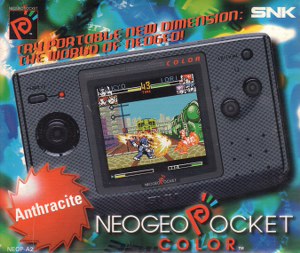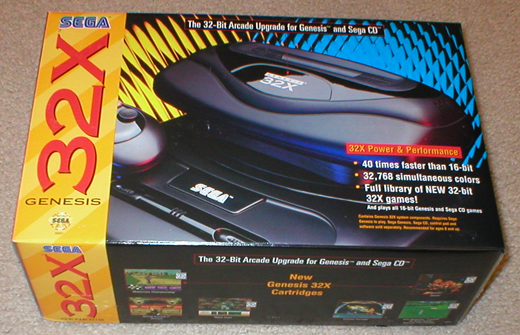These days, the only people who don't own at least a single video game console are the Amish and trogolodytes. However, there have been some game consoles which even the least austere amongst us either didn't own, or wished they didn't- because they were massive failures.
Here's a quick look at some of console gaming's biggest hardware failures.
Sega Saturn
Remember when Sega actually made their own hardware? Well, the Sega Saturn is one of the contributing factors as to why they don't anymore.
By the end of 1994, gamers were clamouring to get their hands on the new "32-bit" consoles, following the success of 16-bit consoles such as the Super Nintendo and the Sega Mega Drive. The Japanese release of the Saturn went relatively well, sold six weeks before the Sony Playstation was released, and sold around 160,000 units on it's first day. The Saturn would go on to be reasonably popular in Japan, selling 6 million units in Japan between 1994 and 2000.
Things were not so rosy for the Saturn in North America, however. Firstly they managed to get the goat of third-party game developers everywhere when they released the Saturn 3 months ahead of schedule- a great idea to get it out before the Playstation (released in September)- but it meant that there were basically no third-party titles at launch for Sega's new beast.
Sega also made another bloop by not releasing a Sonic the Hedgehog platformer title for a Sega console in the 1990s- y'know, the decade in which Sonic was freaking huge? Couple this with basically none of the biggest games released for it in Japan which made it successful there never making it to Europe or North America, and that's why this thing failed in the West.
Atari Jaguar
So the best thing about this bad boy was probably it's name- because it sure wasn't it's ridiculous controller, toilet seat lid design and it's poxy library of games. Oh yeah, and it got Aliens Versus Predator, which was pretty good apparently.
Atari were basically aiming for a Rocky-esque resurgence into the 90's, looking to wage war on it's competitors (namely Sega and Nintendo) and walking away with the spoils. In truth Atari were not up to the challenge and disgraced themselves, flopping like a contemporary Ric Flair after a few martinis.
Third-party game developers wouldn't touch it because they could see the Jaguar for the spectacular suckfest that it was and because it was a nightmare to develop for- and Atari weren't releasing anything great of their own for it either. Add poor marketing to the mix and you've got a bona fide failure.
Oh, and it also got a CD add-on, which made it look like a cross between the Starship Enterprise and- yup, you guessed it- a toilet.
Neo Geo Pocket Colour
Ever heard of one of these? I'd never heard of it either, until I was simply given one when I was about eleven years old. That would've been back in 2001- one year after this thing was dropped from market by SNK in 2000- not even a year after it was released in March 1999. This one has the distinction of me having actually owned and played it- and y'know what? It wasn't really that bad.
There was nothing really wrong with the NGPC, as it featured a perfectly good colour screen, two simple face buttons and a pretty good joystick in place of your standard D-pad, and a lithium cell battery which lasted 2 years and served as a form of internal memory (beat that, GameBoy).
It had some pretty good games, a couple of which get a place on my list of favourite games ever (SNK vs. Capcom: Match of the Millenium and Biomotor Unitron), and even got a really good Sonic platformer (and playing Sonic on a handheld in the year 2000 was a novel idea to me).
However, SNK were terrible communicators, so their third-party developers were somewhat neglected, and the Neo Geo Pocket Colour basically got beaten into obscurity by Nintendo's GameBoy Colour and Pokemon. Folks were probably also saving their pennies up for the upcoming GameBoy Advance. Good timing there, SNK.
Nintendo Virtual Boy
Y'know, when I first heard of/saw this thing, I didn't even realise it was Nintendo hardware- surely Nintendo of all people couldn't produce something so ill-conceived and downright ugly? Well yep, they did just that.
So, the basic premise and main selling point of this thing was that you could play games in 3D- and in order to achieve this effect, you basically had to wear the console, as that was how you viewed the 3D images- through a set of goggles that were built into the machine.
Seriously, people moan about having to wear glasses to be able to view 3D in today's world- but imagine having to set up your Blu-Ray player on a tripod and stick your face into it just so you can watch How to Tame Your Dragon in 3D?
 |
| No, this is not a joke- you really had to play this thing like that. |
Oh yeah, and because of how the 3D effect was created, every single game looked like this:
Great, right? So not only was using it ludicrous because you had to wear it like a set of Fisher-Price virtual reality goggles, but every game you could play on it was presented in red and black. The damn thing also gave you some pretty potent headaches to boot.
Needless to say this thing was about as popular as a communist android hate machine created by splicing together Gordon Brown and Colonel Gadaffi- it was never released in the PAL region and was discontinued by Nintendo in the same year it was released (1995).
Sega Mega-CD & Sega 32X
Wow... where do I start with this one?
The original Sega Mega Drive was first released in 1988 in Japan- and by 1991, Sega figured they'd give this fancy new CD technology a go by releasing the Mega-CD (or Sega CD as it became known as in North America), a peripheral intended to extend the good ol' Mega Drive's lifespan. Why they felt the need to do this only two years after it's release is beyond me- it was doing just fine on it's own.
The Mega-CD had hit North America, Europe and Australia by 1993- and it sucked. Aside from the awesome Sonic CD, the fact that nobody really knew what kind of games to make for the CD format meant that most of them ended up being FMV (full motion video) games. This delicious "full motion video" was a novel idea for a home console at the time, but the truth is they were tiny, grainy and usually of poor content. So that was a no-goer.
Then, Sega do something even stranger- they take a massive back pedal and release a cartridge-based add-on called the Sega 32X for the Mega Drive... and they do at virtually the same time that the Sega Saturn came out! In a true act of trying to grab money hand over fist, Sega thought it would be a good idea to make some extra moolah by shovelling the 32X- which had even less thought put into it than the Mega-CD- while people adjusted to the Saturn.
That's equivilent to if Nintendo released a GameCube Optical Disc peripheral for the latest Wii, at the same time the Wii U comes out? Great huh?
Sega shot themselves in the foot twice, in one go, as 3rd party developers didn't want to waste precious time and resources on developing for a near-defunct platform when gamers were ready to get them some 3D gaming via the Saturn and it's competitors- another reason why no one bought this thing.
Oh yeah, and the cherry on the top? Both the 32X and the Mega-CD required their own individual power supply. Wow.










No comments:
Post a Comment